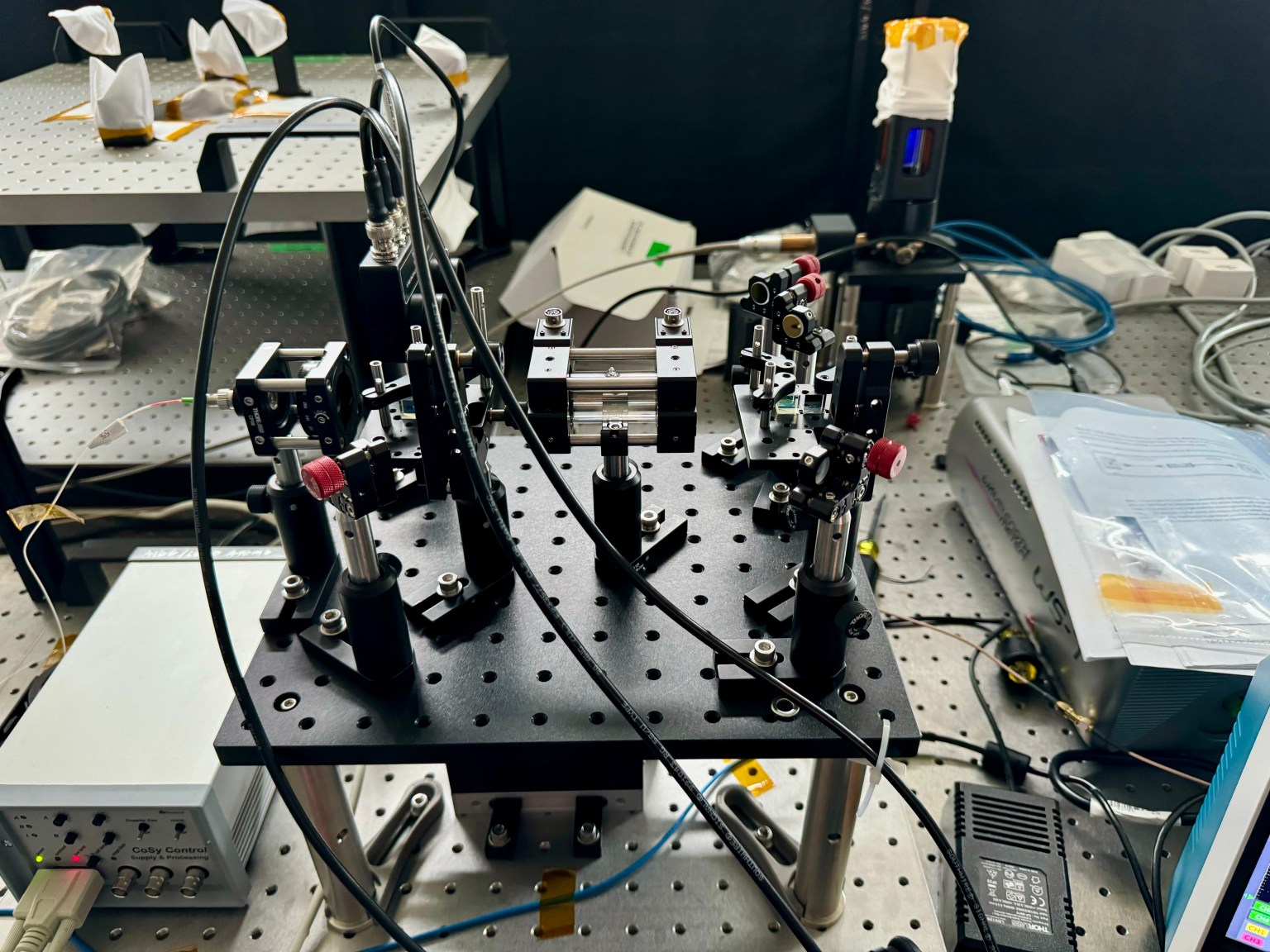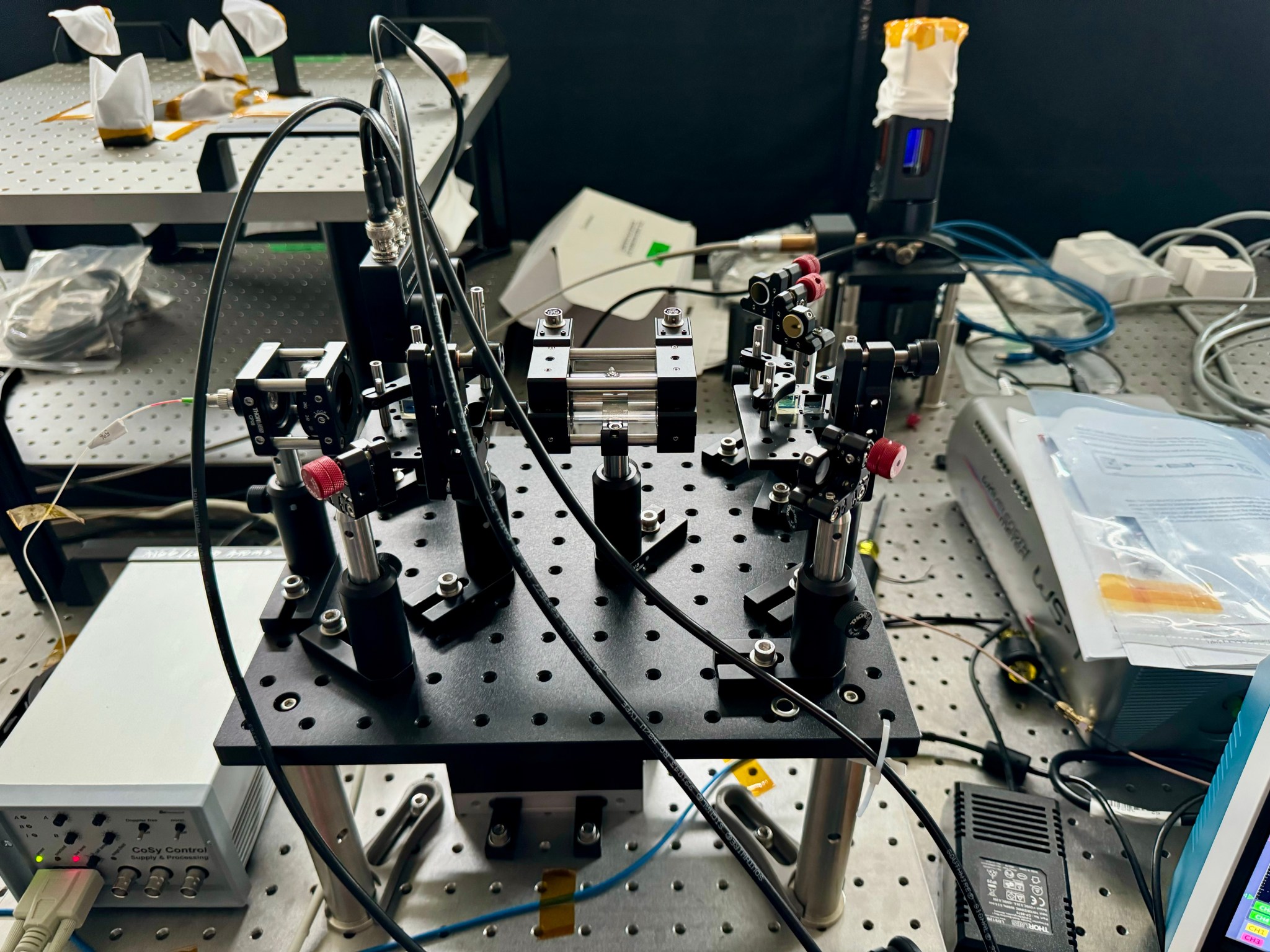Here on Earth, it might not matter if your wristwatch runs a few seconds slow. But crucial spacecraft functions need accuracy down to one billionth of a second or less. Navigating with GPS, for example, relies on precise timing signals from satellites to pinpoint locations. Three teams at NASA’s Goddard Space Flight Center in Greenbelt, Maryland, are at work to push timekeeping for space exploration to new levels of precision.
- One team develops highly precise quantum clock synchronization techniques to aid essential spacecraft communication and navigation.
- Another Goddard team is working to employ the technique of clock synchronization in space-based platforms to enable telescopes to function as one enormous observatory.
- The third team is developing an atomic clock for spacecraft based on strontium, a metallic chemical element, to enable scientific observations not possible with current technology.
The need for increasingly accurate timekeeping is why these teams at NASA Goddard, supported by the center’s Internal Research and Development program, hone clock precision and synchronization with innovative technologies like quantum and optical communications.
Syncing Up Across the Solar System
“Society requires clock synchronization for many crucial functions like power grid management, stock market openings, financial transactions, and much more,” said Alejandro Rodriguez Perez, a NASA Goddard researcher. “NASA uses clock synchronization to determine the position of spacecraft and set navigation parameters.”
If you line up two clocks and sync them together, you might expect that they will tick at the same rate forever. In reality, the more time passes, the more out of sync the clocks become, especially if those clocks are on spacecraft traveling at tens of thousands of miles per hour. Rodriguez Perez seeks to develop a new way of precisely synchronizing such clocks and keeping them synced using quantum technology.
In quantum physics, two particles are entangled when they behave like a single object and occupy two states at once. For clocks, applying quantum protocols to entangled photons could allow for a precise and secure way to sync clocks across long distances.
The heart of the synchronization protocol is called spontaneous parametric down conversion, which is when one photon breaks apart and two new photons form. Two detectors will each analyze when the new photons appear, and the devices will apply mathematical functions to determine the offset in time between the two photons, thus synchronizing the clocks.
While clock synchronization is currently done using GPS, this protocol could make it possible to precisely synchronize clocks in places where GPS access is limited, like the Moon or deep space.
Syncing Clocks, Linking Telescopes to See More than Ever Before
When it comes to astronomy, the usual rule of thumb is the bigger the telescope, the better its imagery.
“If we could hypothetically have a telescope as big as Earth, we would have incredibly high-resolution images of space, but that’s obviously not practical,” said Guan Yang, an optical physicist at NASA Goddard. “What we can do, however, is have multiple telescopes in various locations and have each telescope record the signal with high time precision. Then we can stich their observations together and produce an ultra-high-res image.”
The idea of linking together the observations of a network of smaller telescopes to affect the power of a larger one is called very long baseline interferometry, or VLBI.
For VLBI to produce a whole greater than the sum of its parts, the telescopes need high-precision clocks. The telescopes record data alongside timestamps of when the data was recorded. High-powered computers assemble all the data together into one complete observation with greater detail than any one of the telescopes could achieve on its own. This technique is what allowed the Event Horizon Telescope’s network of observatories to produce the first image of a black hole at the center of our galaxy.

Yang’s team is developing a clock technology that could be useful for missions looking to take the technique from Earth into space which could unlock many more discoveries.
An Optical Atomic Clock Built for Space Travel
Spacecraft navigation systems currently rely on onboard atomic clocks to obtain the most accurate time possible. Holly Leopardi, a physicist at NASA Goddard, is researching optical atomic clocks, a more precise type of atomic clock.
While optical atomic clocks exist in laboratory settings, Leopardi and her team seek to develop a spacecraft-ready version that will provide more precision.
The team works on OASIC, which stands for Optical Atomic Strontium Ion Clock. While current spacecraft utilize microwave frequencies, OASIC uses optical frequencies.
“Optical frequencies oscillate much faster than microwave frequencies, so we can have a much finer resolution of counts and more precise timekeeping,” Leopardi said.
The OASIC technology is about 100 times more precise than the previous state-of-the-art in spacecraft atomic clocks. The enhanced accuracy could enable new types of science that were not previously possible.
“When you use these ultra-high precision clocks, you can start looking at the fundamental physics changes that occur in space,” Leopardi said, “and that can help us better understand the mechanisms of our universe.”
The timekeeping technologies unlocked by these teams, could enable new discoveries in our solar system and beyond.
By Matthew Kaufman, with additional contributions from Avery Truman
NASA’s Goddard Space Flight Center, Greenbelt, Md.































